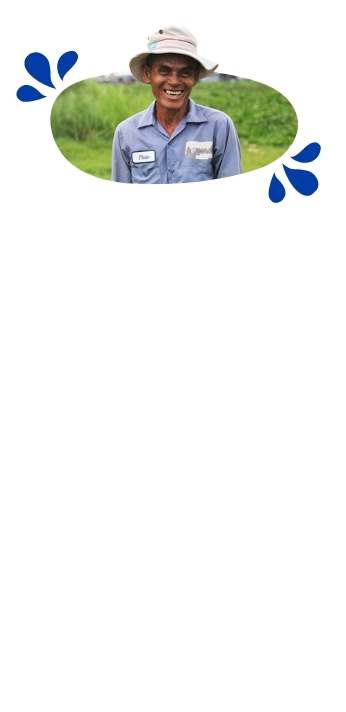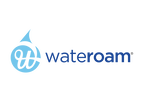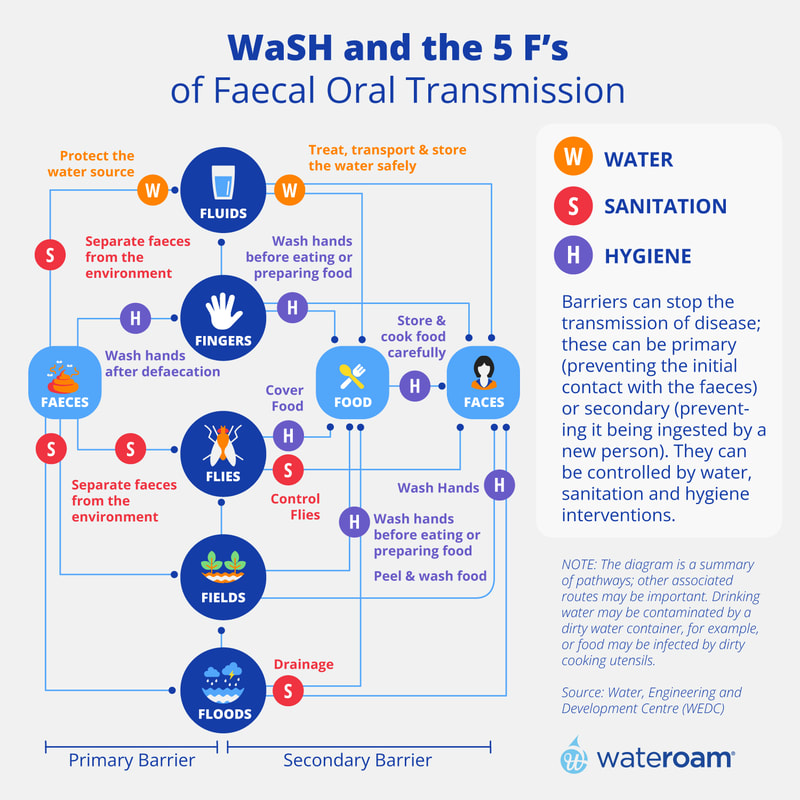WaSH Planning and Design Framework Resources for Indonesia and the PhilippinesIn some Southeast Asian countries, at least 40 per cent of these countries’ populations lack access to safe and clean drinking water. To solve this issue, many organisations are stepping up by carrying out water, sanitation, and hygiene (WaSH) projects. Successful WaSH projects require planning around water security, water safety and community needs, making it quite challenging. Fortunately, plenty of WaSH templates and frameworks can help you with that. Many organisations, such as WHO, UNICEF, and local governments have WaSH frameworks, guidelines, and data to help you design airtight plans that factor in different considerations, from water security to community activation. Having done projects in over 50 countries ourselves, we’d like to share some of our handpicked WaSH project resources to help with your projects in this region, particularly in Indonesia and the Philippines. International Water, Sanitation and Hygiene Guidelines and ResourcesOne of the main goals of a WaSH project is to prevent water-related diseases and faecal contamination from harming a community. Generally, WaSH projects will involve these steps:
Different projects will handle various aspects of WaSH, such as providing a clean water supply, proper sanitation and adopting hygiene practices. You can see how various WaSH barriers work to keep the community safe in this 5 F’s diagram. WaSH and the 5 F’s of Faecal Oral Transmission from the Water, Engineering and Development Centre (WEDC) In addition to that, WaSH projects can be designed for various goals and considerations, not limited to:
WaSH Project Guidelines and Design ToolsBelow are some of the WaSH frameworks and guidebooks that you can use to plan your project: The BEST Framework was developed by the Neglected Tropical Diseases (NTD) NGO Network in 2016 to support WHO’s Global Strategy and Action Plan on WaSH and NTD’s. The BEST Framework is holistic in that it covers four key areas at each step of planning to ensure the sustainability of a project’s positive impact:
The BEST Framework can be used to ensure that all actions needed for control and elimination, including water and sanitation, and all other critical interventions for NTD control and elimination, are addressed while ensuring sustainability and systems strengthening. There are 5 key steps to the BEST Framework:
Step 4: Planning and Programme Design from the BEST Framework Are you looking for a partner with experience in improving water supplies and community development WasH initiatives? Wateroam has overseen and contributed expertise and our water filters to WasH projects in over 50 countries and counting. Reach out to us today to find out more! 2. WaSH Guidelines and Standards for Quality Humanitarian Response from The Sphere Handbook The Sphere Handbook 2018 guides humanitarian practitioners, setting minimum standards for humanitarian response and WaSH guidelines. It covers critical areas such as hygiene promotion, water supply, excreta management, solid waste management, and WaSH in disease outbreaks and healthcare settings. The handbook aims to improve the quality of humanitarian assistance and ensure accountability to affected populations. 2 More WaSH Project Frameworks Here are 2 more useful WaSH frameworks and guidelines you can also use: 3. World Vision’s Water, Sanitation and Hygiene (WaSH) World Vision’s WaSH model is a set of evidence-based practices for the sustainable supply of safe water, dignified sanitation, and good hygiene across various contexts. It was developed to assist World Vision’s child well-being (CWB) aspirations and objectives. 4. CAWST’s Approaches to WaSH Program Design (Word Doc) The Centre for Affordable Water and Sanitation Technology (CAWST), in support of USAID developed this document to provide you with examples of WaSH community education programmes. These examples from CAWST include creating demand, sharing knowledge where capacity development occurs and engaging with stakeholders to include gender, age, and disability in household water treatment and safe storage programmes. If you want to learn more, you can also check out the UN’s information brief here(8) and our blog post we’ve written which also briefly covers some of Sphere’s WaSH standards during emergencies. Community-Led Total Sanitation:Community-Led Total Sanitation (CLTS) (9) is an approach that focuses on empowering people within the communities themselves to take charge of eliminating open defecation by improving sanitation and hygiene practices instead of relying on ‘outsiders’. This framework encourages the community to analyse their sanitation profile, defecation practices, and consequences. WaSH professionals can use the CLTS framework to engage communities, build sustainable habits and practices, and become open-defecation-free. Source: Do’s and Don’ts of a CLTS facilitator. Page 10 of Handbook on Community-Led Total Sanitation We have two versions of the framework that you can use: This framework was developed by Plan UK, a child-focused community development organisation, and the Institute for Developmental Studies from the University of Sussex, UK. 2. Community Approaches to Total Sanitation by UNICEF This framework is based on case studies from India, Nepal, Sierra Leone, and Zambia. Water Safety Plans (WSP):A Water Safety Plan(10) systematically ensures drinking water safety by identifying and managing risks in the water supply system. The WHO has developed guidelines for water safety plans that your team can use here. A water safety plan has three core components:
Here are some links to resources for the fundamental principles of WSP and step-by-step guidelines that WaSH professionals can use: These guidelines follow the fundamental principles and critical components of water safety plans. Figure 4.1 - Page 48 of WHO’s Guidelines for Drinking Water Quality 2. WHO - Water safety plan manual: step-by-step risk management for drinking water suppliers, second edition (12) This manual provides step-by-step guidance for water safety planning based on the WHO guidelines shown above. It also includes examples and case studies for various settings that WaSH project planners can use. These are just a few of the many international frameworks and guidelines available that you can choose from. Still, they should be sufficient to be a sound foundation for your upcoming projects. If your next project will be in Indonesia or the Philippines, we’ve also included some key policies and guidelines from these countries that could help you. Are you looking for a partner with experience in improving water supplies and community development WasH initiatives? We worked with our partners to serve over 200,000 people and deployed 1,200 water solution products globally. Reach out to us today to find out more! Indonesia’s WaSH Resources and DataPAMSIMAS: Indonesia’s Community-Based Drinking Water and Sanitation Provision ProgrammeStarting in 2008, the Indonesian government has instituted a platform to improve the country’s drinking and water and sanitation development using a community-based approach called PAMSIMAS (Program Penyediaan Air Minum dan Sanitasi Berbasis Masyarakat) (13) Starting with PAMSIMAS I in 2008, this program has succeeded in increasing access to safe drinking water for 10.4 million people and access to adequate sanitation for more than 12,000 villages around Indonesia. The PAMSIMAS program receives funding from the federal, regional, and village governments, as well as support from foreign loans from the World Bank and grants from the Australian government. The PAMSIMAS Programme has 4 activity cycles:
2. Planning
3. Implementation
4. Sustainability
While these initiatives are spearheaded by Indonesian government authorities, one possible course of action for your organisation is to work with your target villages and the local authorities to draft proposals to be selected for the PAMSIMAS programme. Another course of action is to check if your target village is currently on the PAMSIMAS list. You can find details on PAMSIMAS on their official government website. Indonesians Water Resource Data and MonitoringYou can find Indonesian water resource data and maps to help plan your next WaSH project here:
Water Quality Standards in IndonesiaBelow are the laws governing Indonesia’s local drinking-water quality and sanitation standards that your WaSH projects should adhere to (last accessed 1st March 2024): Drinking-water quality standards: Government Regulation No. 22/2021 on Implementation of Environmental Protection and Management (JDIH) Annex 6 contains a detailed table of Indonesia’s water quality standards, with class 1 water referring to drinking water. There are 48 standards in total to meet. You can download the annexes (lampiran) on their official website. We’ve attached a translated version of Annex 6’s page 1 below. Annex 6 GOVERNMENT REGULATION OF THE REPUBLIC OF INDONESIA NUMBER 22 OF 2021 ABOUT MAINTENANCE OF PROTECTION AND ENVIRONMENTAL MANAGEMENT NATIONAL WATER QUALITY STANDARDS I. RIVER WATER QUALITY STANDARDS AND THE LIKE
*3 Dev refers to 3 standard deviations of difference of daily temperature range (22) Definitions of raw water sources:Government Regulation no. 122 of 2015 concerning Drinking Water Supply Systems (23) This legislature includes definitions and requirements for different raw water sources including wells and rainwater harvesting (Chapter 2). It also includes the roles and responsibilities of different government levels and covers financing details. Some of Our Work in IndonesiaWe frequently work together with partners like WaterPlus and local players like BGBJ in Bantar Gebang Indonesia to provide clean water to as many communities as we can. BGBJ is an organisation that serves the families who make a small income from salvaging valuable materials from the Bantar Gebang landfill’s waste, such as plastic, paper, metals, glass, and ewaste. In 2020, we worked together with both BGBJ and WaterPlus to to install our ROAMfilter™ in a local school. Our ROAMfilter™ products use ultrafiltration technology which have pores that are small enough to filter out 99.9% of bacteria, parasites and viruses. These pores are not as small as nanofiltration pores, so they don’t require as much pressure to move water through the system, allowing it to be lightweight and easy to install. Upon installation, we also tested the water quality to ensure that it was safe for consumption according to international and local Indonesian water quality standards, as mentioned above. Through this project, teachers and students now have clean drinking water that they can bring home each day. To find out more about projects like these, you can check out our impact in Indonesia. The Philippines’ WaSH Resources and DataOverview of The Philippines’ Recent Water Management PoliciesThe Philippines has ample water resources: 421 rivers, 221 lakes and abundant rain and groundwater. However, changes in weather patterns and geographical challenges leads to frequent water shortages in the Philippines. In 2022, 646,608 families, or 2.4% of the population, still used unsafe sources like surface water and unprotected wells and springs. The Philippines has the Philippines Water Supply and Sanitation Master Plan(26). To hit the country’s water supply and sanitation (WSS) targets by 2030, the plan does the following:
The Philippines also has a Joint Programme that uses the iWaSH framework for delivering safe water, sanitation and hygiene, particularly to women and girls in the community. You can find out more at iwash.gov.ph. Philippine Water Resource Monitoring and Datasets:You can find more data on the Philippines’ water resources at the Philippine Local Water Utilities Administration and its Data Bank Division:
Water Quality StandardsThe Philippines’ water quality standards are governed by the Philippine National Standards for Drinking Water of 2017 and the Safe Drinking Water Act SBN 1048: Administrative Order No. 2017 - 0010: Philippine National Standards for Drinking Water of 2017 (31) This order prescribes the standards and procedures for drinking water quality to protect the public’s health. It also contains details on the methods of analysis for their different parameters. Below is a synthesis of the mandatory drinking water quality parameters and their maximum allowable level, which you can incorporate into your next WaSH project’s planning: Table B-1. Mandatory Drinking-Water Quality Parameters
Safe Drinking Water Act SBN 1048 (32) - The bill requires the physical, bacteriological, chemical, and overall examination of the quality of water from existing sources every two months, amending the Sanitation Code of the Philippines. It directs water service providers to prepare water safety plans to be approved by the DOH. Water Code of the Philippines - includes stipulations for water source developmentPresidential Decree No. 1067 - The Water Code of the Philippines (33) - “A decree instituting a Water Code, thereby revising and consolidating the laws governing the ownership, appropriation, utilisation, exploitation, development, conservation and protection of water resources.” This decree includes instructions relevant to WaSH projects, such as: Chapter IV Article 32. “The utilization of subterranean or ground water shall be coordinated with that of surface waters such as rivers, streams, springs and lakes, so that a superior right in one is not adversely affected by an inferior right in the other. For this purpose the council shall promulgate rules and regulations and declare the existence of control areas for the coordinated development, protection, and utilization of subterranean or ground water and surface waters. Control area is an area of land where subterranean or ground water and surface water are so interrelated that withdrawal and use in one similarly affects the other. The boundary of a control area may be altered from time to time, as circumstances warrant.” There are a few more like this in Chapter 4, such as Chapter IV Article 35 related to disease prevention and Article 39 which has instructions for structures tapping groundwater. Learning more about how these laws could apply to your project before you begin your projects in the Philippines is recommended. Wateroam’s Work in the PhilippinesWhen our local partners visited Calauan, Laguna, in the Philippines, they realised that the community's water was untreated despite water filtration systems already existing there. Having a discussion with our partners and community leaders in Calauan This is an example of how Sphere’s water supply, sanitation and hygiene promotion initial needs assessment checklist can be applied to WaSH projects. The water supply checklist includes these questions: (34)
The community didn’t use the filters as they were too complicated to use. That means that while there is a water treatment in place, the community lacked operational skills to make use of it leading to untreated water still being used. The Sphere water supply checklist has a total of 28 questions. This checklist also includes questions on community water collection, disaster concerns, traditional water-related beliefs, finance, public-private cooperation and more. Working with our partners, we distributed the ROAMfilter™ products to Calauan, which was easier to use than the original water filters. We are grateful for the chance to work with Don Bosco Calauan Laguna and Spring Technologies Pte Ltd to bring clean water to Calauan. You can find more stories like this on our Philippines impact page. Planning and accounting for your projects' logistics, community, and safety requirements could be overwhelming without proper structure and help. We hope these resources can help your next WaSH project succeed. At Wateroam, we’re passionate about bringing clean water to communities through our ultrafiltration water filters and the WaSH projects we organise and contribute to. We’re familiar with managing these projects and leveraging water resource management frameworks in many countries, including improving the water supply for schools in Indonesia and disaster relief projects in the Philippines. If you’re looking for an experienced partner to help you plan and manage rural development or disaster relief projects, contact us via the banner below! References:
0 Comments
Leave a Reply. |
Want more?Click below to see what other blog topics might peak your interest? 


|
- About Us
- Products
- Solutions
- Resources
- Get Involved
-
Blog
- The Global Water Situation
-
Facts about Water
>
- Water supplies for crisis
- WaSH During Emergencies
- Well Water Cleaning and Filtration Guide: Southeast Asia
- Gravity-fed Water Systems: Water Purification and Filtration setups in Southeast Asia
- A Guide to Rural Rainwater Harvesting and Filtering
- Water Shortages and Their Effect on Children in Rural Schools
- WaSH Planning and Design Framework Resources for Indonesia and the Philippines
- Rural Community Water Supply: Water Systems in Villages
- Info on our Products
- Impact Stories
- Upcoming & Past Events
- Contact
- Store
- About Us
- Products
- Solutions
- Resources
- Get Involved
-
Blog
- The Global Water Situation
-
Facts about Water
>
- Water supplies for crisis
- WaSH During Emergencies
- Well Water Cleaning and Filtration Guide: Southeast Asia
- Gravity-fed Water Systems: Water Purification and Filtration setups in Southeast Asia
- A Guide to Rural Rainwater Harvesting and Filtering
- Water Shortages and Their Effect on Children in Rural Schools
- WaSH Planning and Design Framework Resources for Indonesia and the Philippines
- Rural Community Water Supply: Water Systems in Villages
- Info on our Products
- Impact Stories
- Upcoming & Past Events
- Contact
- Store











.jpg)